Do big sporting events make us do more sport?

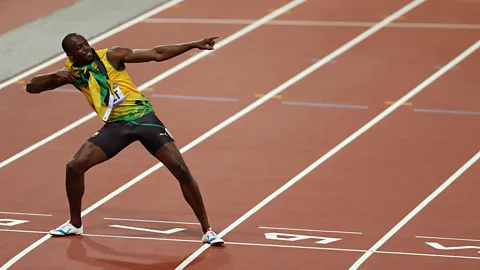 Getty Images
Getty ImagesThe Olympics are set to thrill audiences across the globe – but how many of them will get off the sofa for a run afterwards? BBC Future investigates.
Some time ago, I spent half the weekend sitting on the sofa watching the Davis Cup. I thought about going for a run, but I didn’t want to miss the rest of the match and soon it was starting to get dark, so I didn’t bother. Whether it’s Wimbledon or the US Open, whenever I watch tennis I think how nice it would be to play regularly again myself. But I’ve been thinking that for almost 20 years now, without actually setting foot on a court.
The evidence would suggest that I’m not the only one.
Yet whenever a country bids to host a high profile sporting event, part of the all-important plan for the legacy often includes the promise that more people will take up sport as a result. And none more so, than in the bid to host the Olympics in London. The minister concerned, Tessa Jowell said their bid would be the first to “set challenging but achievable targets as a measure of our ambition – that by 2012 two million more people would be physically active, a million more would be playing sport regularly, and 60% of young people would be doing at least five hours of sport per week.”
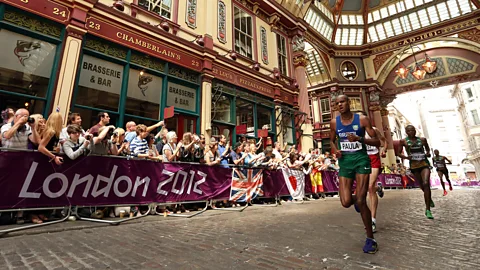 Getty Images
Getty ImagesEven more optimistically in one document the Department of Culture Media and Sport said it would encourage “the whole population to be more physically active” – some ambition.
In the end it didn’t turn out quite like that. After the Games, Sport England figures for participation in sport showed that the number of people doing at least 30 minutes a week of sport at a moderate intensity had risen to 15.5 million. This was 1.3% higher than the previous year, so it was all looking good, but already the numbers are declining.
But to be fair, participation does vary from sport to sport. In of medals, Britain had the greatest success in cycling and athletics, and those sports did show an increase in participation, but they also did well in rowing and there after the Olympics the number of people taking part decreased by 15%. The number of people swimming has decreased too. The one area where there was a difference in Britain was in participation amongst people with disabilities, where there has been a rise of between 2% to 4%.
Even now only just over one-third of people in Britain take part in sport once a week (and that’s based on self-reports so it is likely to be an overestimate). The House of Lords Select Committee report on Olympic and Paralympic Legacy has said that a step-change in participation levels simply hasn’t happened.
These are the statistics for a whole country, but what if you lived right next to a massive sporting event. Surely then it would have more an impact? Maybe not. On a Friday in October 2011 before the London Olympics and then again on two Fridays in October 2012 after the Olympics, researchers in Stratford in East London stood near the station within a few minutes’ walk of the park where many of the events were held, giving out surveys to hundreds of ers-by. They were asked to rate how active they considered themselves to be and whether they were intending to be more active in the future. The Games made no difference.
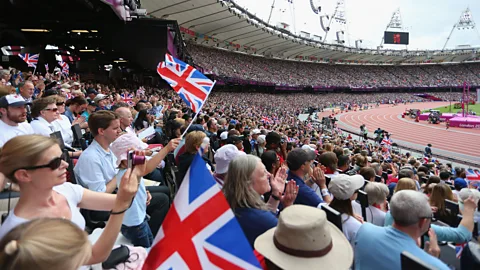 Getty Images
Getty ImagesAnd Britain is not alone. Rather than the Games failing to deliver the rise in participation, when you look at the evidence from past events, the failure was more the expectation it would happen at all. Before the Commonwealth Games in Glasgow the Scottish Government looked back at the legacies of other sporting events and on the whole there hasn’t been a huge difference. Having seen the evidence, they were cautious about too much optimism after the games they hosted. More people have ed sports clubs but it’s too early to say whether participation has increased.
After the Sydney Games in 2000 Australians became less active and obesity even increased, particularly in the young. Following the Athens Olympics things were looking more positive when participation rose by 6%, but five years later it had dropped by 13% leaving the country playing less sport than it had before.
And winter sports do no better. After the Winter Olympics in Vancouver in 2010 there was no change in the number of people skiing.
Of course any evaluation of the impact of the Olympics faces the lack of a control group. It’s impossible to insulate half the people from the Games, so we can never know what would have happened to rates of participation in any of these countries if they hadn’t won Olympic bids.
The Games that stand out as an exception are the 1992 Barcelona Olympics, where it seems more people did take part afterwards, with figures quotes rising from 47% in 1989 to 51% in 1995. But not everyone is convinced. Some argue that the methodology for monitoring is unclear, as are the numbers taking part.
The publication of the figures in a book rather than in a paper has made it hard for researchers to examine what happened in detail.
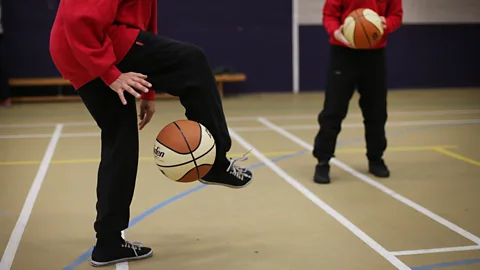 Getty Images
Getty ImagesBut even if we do take those figures at face value and assume that there was a big increase in people taking part in sport after the Barcelona Olympics, why doesn’t that happen after most sporting events?
Perhaps it’s a mistake to assume an automatic link between watching sport and playing it. While the games are on of course, they encourage people to do just the opposite – to spend whole sunny days, not out playing sport, but inside sitting on the sofa with the curtains shut to stop the sun shining on the TV screen and spoiling the view. We don’t expect half the audience of a smash-hit musical to take up singing and dancing lessons or apply to drama school the next day, yet we seem to expect it of sporting events. Far more of us watch sport without even considering taking part. Crowds are always going to outnumber the players.
Theoretically there are three ways in which watching sport might increase participation in sport after an event through what’s known as the “demonstration effect”. The first is inspiring people who already do sport to do it more often. The second is to encourage those lapsed sportsters to take it up again and finally there are the people inspired to take up sports they’ve never done before. Fancy trying the pole vault, anyone?
In fact, you could argue that elite sportspeople are so clearly removed from anything the rest of us could achieve these days, that watching them could have the opposite effect. We realise that even if we trained full time we could never match up to them.
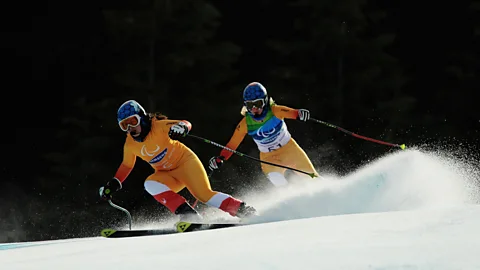 Getty Images
Getty ImagesNot long before the 2012 Olympics I presented a live radio programme from a marquee in the car park of Bush House where the BBC World Service used to be based. We were looking at the workings of the elite athlete’s body and one of the live experiments we conducted was to have the fittest member of our production team (someone who has completed more than a dozen ultra-marathons) run on a treill at the same pace as the Iron Woman champion on the treill next door. As our fit friend struggled we all realised just how unfit even the fittest people are in comparison with the elite. For the same series, I went to Jamaica and stood metres from some of the best sprinters in the world. Watching their faces contorted with effort moving at speeds which I had never before seen humans move, it was clear to me that this had nothing in common with the extra sprint I might do when I go on a jog and am in sight of home.
In the research I mentioned before conducted near the Olympic site in east London people’s perceptions of their own health status were actually lower after the Olympics, evidence perhaps that seeing those in tip-top condition had made them more aware that they weren’t.
The psychological research on imitation might give us an insight into why sporting events don’t usually have the desired effect of getting people to rush out to play sport. Modelling is the term used for copying someone else’s behaviour. The eminent Stanford University psychologist Albert Bandura has led the field, developing social learning theory. He found that people often do copy the behaviour they see. So you might think this would apply to sport too.
But Bandura also outlined the conditions necessary for modelling to work. First people need to pay attention. If you don’t notice the behaviour, you’re not going to copy it yourself. And then you need to it. So far so good. Big sporting events fulfil both those criteria.
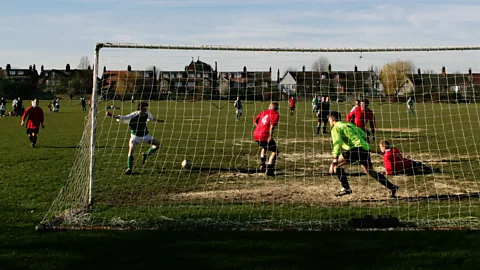 Getty Images
Getty ImagesThen you need the motivation to do it yourself. This could be an incentive such as getting fit or winning. Again, this could apply to watching and then playing sport. But then there’s a fourth key condition known as reproduction. In other words are you physically capable of doing what you are watching and do you believe that you are capable?
With the kind of high-level performances on show at global sporting events, the answer is probably no to both. You can’t match them physically and you are probably well aware of that. A lot of us might have sat on the sofa doing an impression of Usain Bolt’s bow and arrow signature impression, but how many of us have been inspired by watching him to time ourselves sprinting 100 metres?
We hear a lot about the role models. There’s no doubt that they are important. Anecdotally, young people talk about the role models that inspire them and every successful professional sportsperson will be able to list the sporting heroes they had as children, but on a mass scale they don’t seem to be enough to get us moving.
Well before the London Olympics in 2004 a report from Institute of Public Policy Research think tank reviewed the evidence for an increase after sports participation in such events and warned that unless specific strategies were put in place the games wouldn’t result in more people taking up sport. In the foreword, Tessa Jowell welcomed the highlighting of the challenges, yet still we know it didn’t work.
The authors of the IPPR report point out that role models are all very well, but people need constant reinforcement, so once the games are over, they need continued reminders. They also need reminding from those around them and the provision of facilities and training or encouragement for people exactly at their level. That’s not always easy to provide.
 Getty Images
Getty ImagesAs well as grass-roots facilities, there are other issues to address such as why people haven’t liked sport in the past, what else might be deterring them and whether sport can be fitted around work and family.
Maybe participation in sport is not the right legacy to look for in a sporting event. It’s not so much that the Olympics failed to get people to participate as that we should never have expected them to in the first place. The Olympics can do many things, but maybe this shouldn’t be one of them.
600,000+ Future fans by liking us on Facebook, or follow us on Twitter, Google+, LinkedIn and Instagram
If you liked this story, sign up for the weekly bbc.com features newsletter, called “If You Only Read 6 Things This Week”. A handpicked selection of stories from BBC Future, Earth, Culture, Capital, Travel and Autos, delivered to your inbox every Friday.
